We may earn money or products from the companies mentioned in this post. This means if you click on the link and purchase the item, I will receive a small commission at no extra cost to you ... you're just helping re-supply our family's travel fund.
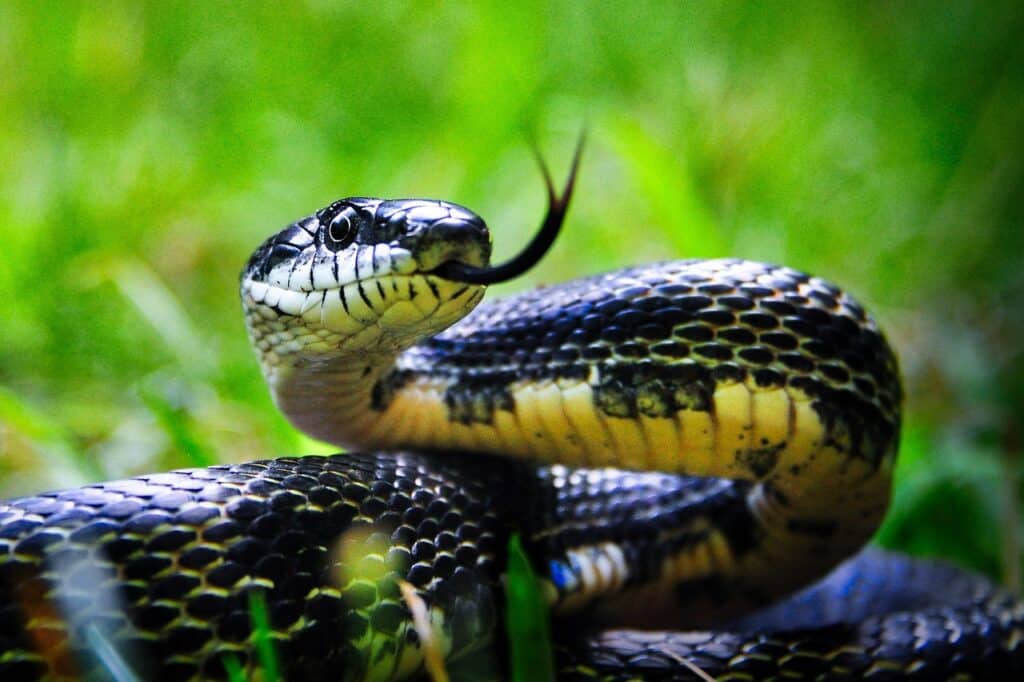
Backyards across the United States often host a diverse range of wildlife, and snakes are among the most misunderstood. While their sudden appearance can cause alarm, most are harmless and play vital ecological roles by controlling pests like rodents and insects. Understanding which species might be nearby helps people coexist with these reptiles safely. From harmless garter snakes to venomous copperheads, here are six common backyard snakes found across the nation, each with unique traits, habits, and ecological importance.
1. Eastern Garter Snake
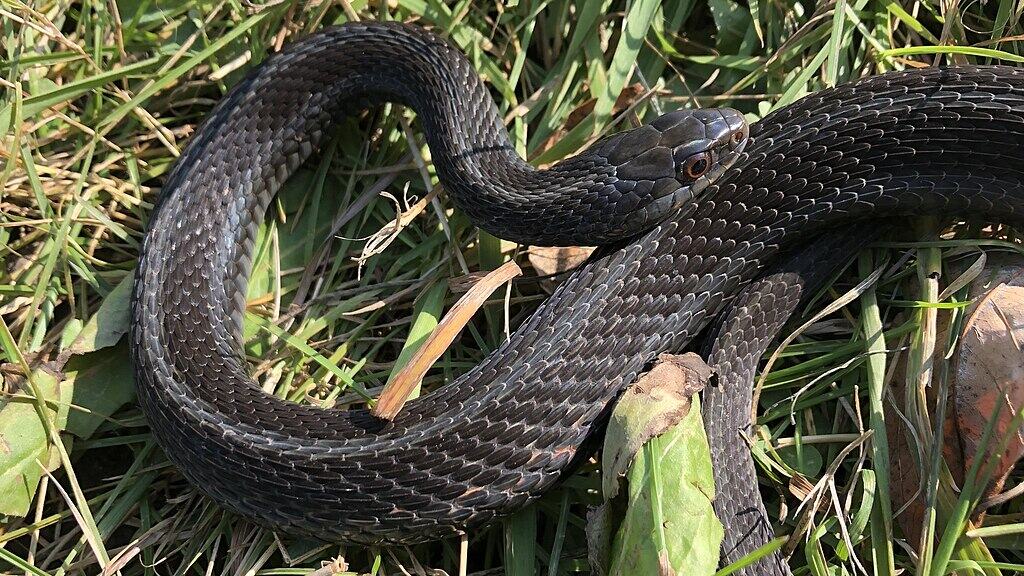
The Eastern Garter Snake (Thamnophis sirtalis) is one of the most widespread species in North America, found from Florida to Canada. Typically measuring 18–26 inches long, it features three yellow stripes running along a dark green or black body. Preferring moist environments, it thrives in gardens, grasslands, and near ponds. This nonvenomous snake primarily feeds on earthworms, frogs, and small fish, consuming about 30% of its body weight in a single meal. When threatened, it releases a foul-smelling musk rather than bite. Garter snakes are vital in keeping backyard pest numbers under control.
2. Black Rat Snake
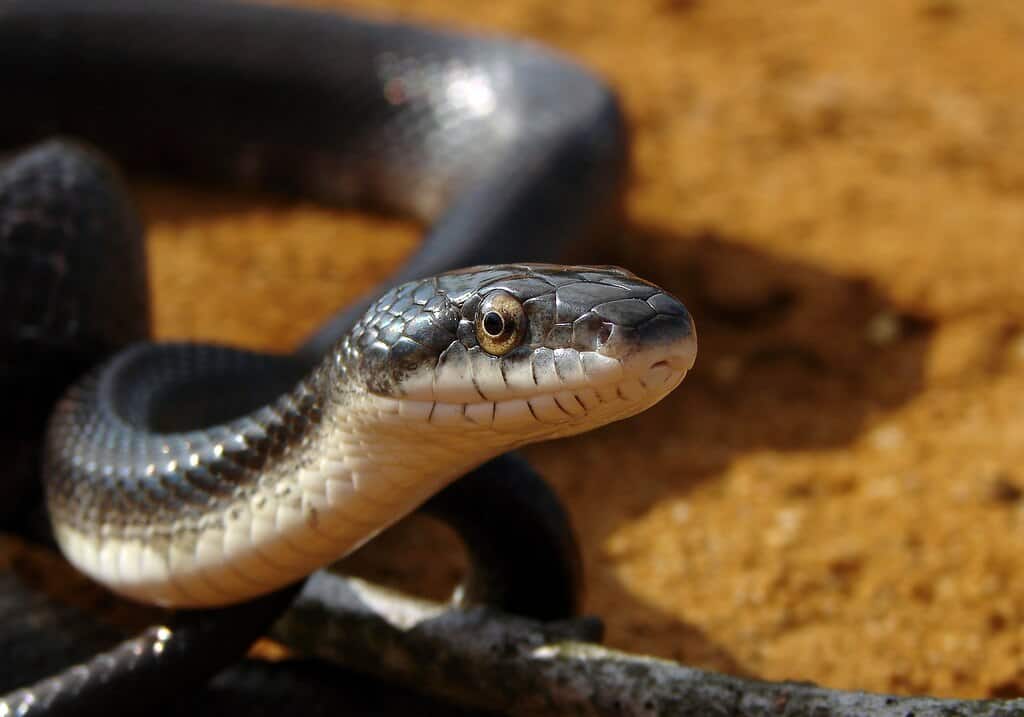
The Black Rat Snake (Pantherophis obsoletus), also known as the Eastern Rat Snake, is a large nonvenomous constrictor reaching lengths of 42–72 inches. Found across the eastern and central United States, it is an expert climber often spotted in trees, barns, and attics. Its diet mainly consists of rodents and bird eggs, consuming several mice in one sitting. When frightened, it mimics rattlesnakes by vibrating its tail and hissing loudly. Despite this display, it is completely harmless to humans. Farmers and homeowners benefit from their presence, as they help control rodent populations naturally.
3. Northern Water Snake

The Northern Water Snake (Nerodia sipedon) is a robust, semi-aquatic species commonly found in the northeastern and midwestern US. Measuring 24–55 inches in length, it features dark brown or reddish bands that darken with age. These snakes feed heavily on fish, tadpoles, and amphibians, often consuming several prey items weekly. Although nonvenomous, they can appear aggressive when cornered, striking repeatedly and releasing a strong musk. Unfortunately, they’re often mistaken for cottonmouths, leading to unnecessary killings. In truth, Northern Water Snakes are important for maintaining balanced freshwater ecosystems.
4.Copperhead
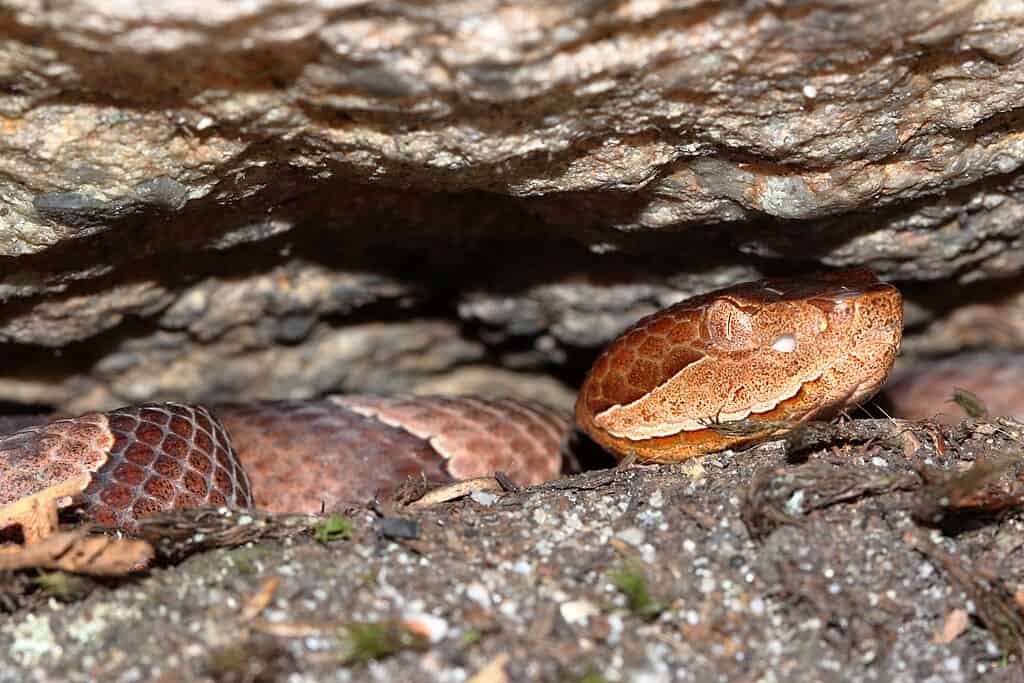
The Copperhead (Agkistrodon contortrix) is one of the most frequently encountered venomous snakes in the eastern and southern United States. Adults grow between 24–36 inches and display distinctive hourglass-shaped bands on a coppery background. Their camouflage allows them to blend perfectly with leaf litter, increasing the risk of accidental encounters. Copperheads rely on ambush tactics, feeding on small rodents, insects, and frogs. Though venomous, their bites are rarely fatal; fewer than 0.01% of cases in the US lead to death annually. They play a key role in natural pest management, helping to stabilize local ecosystems.
5. Eastern Coral Snake
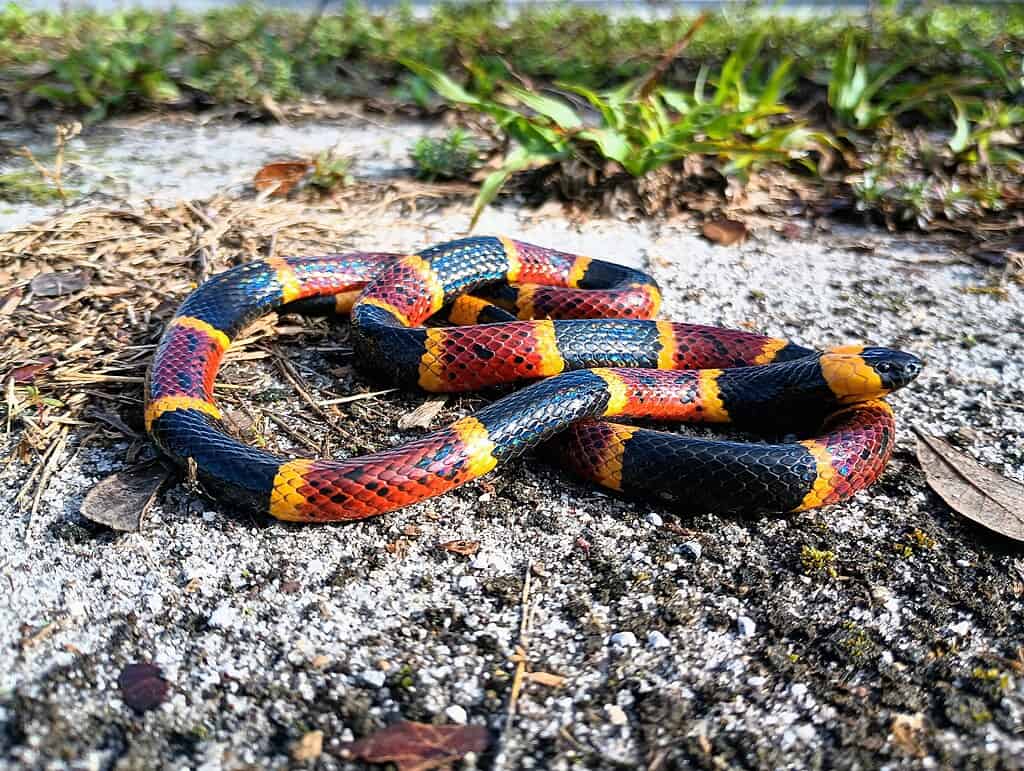
The vividly colored Eastern Coral Snake (Micrurus fulvius) inhabits the sandy soils and pine forests of the southeastern United States. Averaging 20–30 inches in length, it is easily recognized by its red, yellow, and black bands. This species possesses potent neurotoxic venom capable of paralyzing prey within minutes, though bites to humans are exceedingly rare, fewer than 25 cases are reported annually. The coral snake primarily feeds on smaller snakes and lizards. Its elusive, burrowing nature makes it seldom seen, but its striking appearance has inspired many harmless mimics, including the scarlet kingsnake.
6. Western Diamondback Rattlesnake
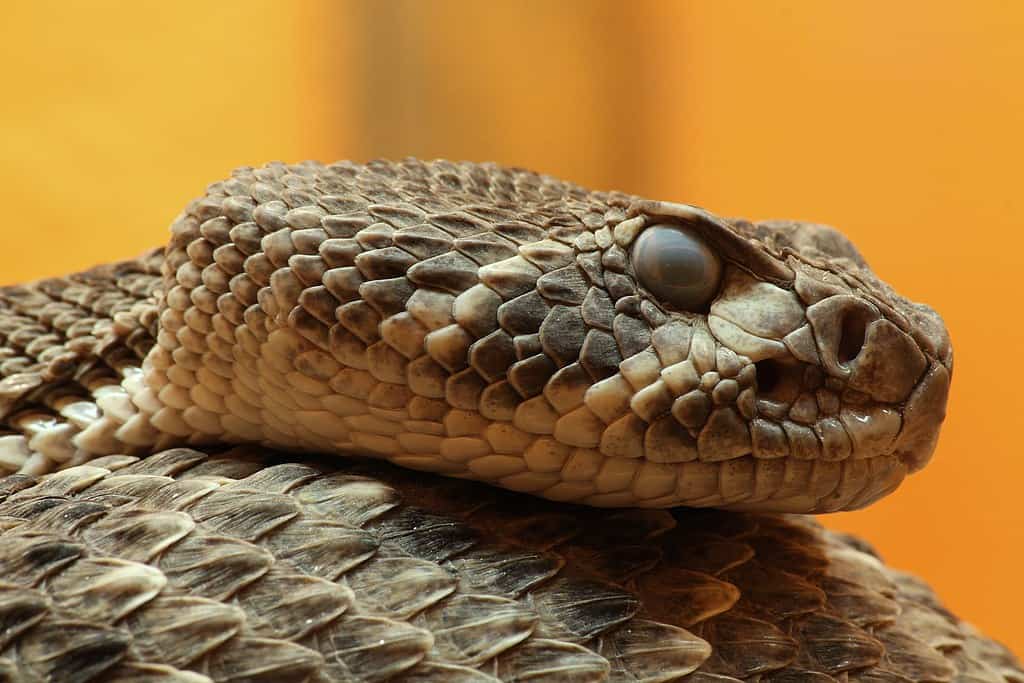
The Western Diamondback Rattlesnake (Crotalus atrox) is one of North America’s most iconic venomous snakes, widely found across the Southwest and into Mexico. Growing between 36–72 inches, it displays distinctive diamond-shaped markings along its back and a black-and-white banded tail ending with a rattle. Known for its loud warning rattle, it can strike within 0.3 seconds if threatened. Its venom, though rarely fatal, requires medical attention. Feeding on rodents, birds, and lizards, a single adult may consume up to 30 prey items per year. Despite its reputation, it plays a crucial role in desert ecosystems.